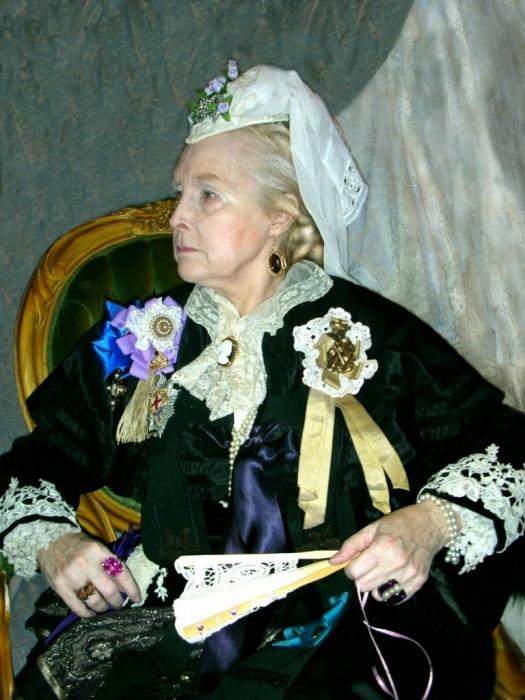Not every monarch manages to keep such a memory as this woman. When historians talk about the United Kingdom of Great Britain and Northern Ireland in the second half of the 19th century, they call the country Victorian England, and the period from 1837 to 1901, during which Queen Victoria ruled, is called the Victorian era. But the beginning of the tale was not at all rosy ...
Alexandrina Victoria was the only child in the family of Eduard Augustus, the Duke of Kent from the
Hanover dynasty, and the princess of one of the German principalities Victoria Saxe-Coburg-Saalfeld. Victoria's mother first married at the age of 17, but it was as if written to bear a widow's cross. The first husband died 11 years after the wedding, leaving a woman with two children. The second marriage was concluded in 1818. The bridegroom (duke of Kent) was at that time over 50. Just 8 months after the birth of his only daughter, he was dying of pneumonia (the invention of antibiotics was yet to come), 6 days ahead of his father, King George III of Britain.
The future Queen Victoria was born May 24, 1819 in the humble Kensington Palace on the London outskirts. Although Victoria was only fifth in line for the throne, and the chances of taking him were slim, the Duke of Kent believed that other heirs would be able to challenge Victoria’s rights to the throne in the future if she was not born on British soil. Therefore, he insisted on moving from Germany to England. For the newborn girl, the name Victoria was chosen. The godfather of the baby was the Russian emperor Alexander I, because Alexandrina became the second name of the future queen. In the family she was called Drina.
Victoria was born into a royal family, but her childhood passed in rather cramped conditions (her father left them a legacy of debt).
After the death of her father and grandfather, Victoria is already in third place in the line for the throne after her two childless uncles. George IV becomes the king, a former regent with a sick father since 1811. The new king weighed more than 120 kilograms, loved luxury and entertainment. Although he was a fan of books by Jane Austen, patronized the artists of his time, the daughter of his late brother annoyed the king. He reluctantly allowed Victoria and her mother to move to Kensington Palace and approved the girl a small allowance. Mother's brother Leopold (future king of Belgium) paid for her education.

Victoria did not attend school, she studied at home in history, geography, mathematics, the basics of religion, playing the piano and drawing. In the first three years of her life, she spoke only German, but then pretty quickly mastered English and French. A conservative mother protected her from the worst aspects of royal life, instilled in her daughter noble values and brilliant manners. After the death of three uncles who separated the princess from the throne, at the age of 18, Queen Victoria ascended the throne.
She ruled the country for 63 years, 7 months and 2 days (from 1837 to 1901), to this day, remaining the monarch who occupied the British throne for the longest time. At the age of 21, the Queen of Britain married her cousin, Albert Saxe-Coburg-Goth, the German prince. They married on February 10, 1840, in the chapel of the Royal Palace in St. James.
During the reign of Victoria, Britain became a powerful empire, subjugating a quarter of the world, its soldiers fought on many fronts. The country's population doubled and became predominantly urban. Slavery was abolished. Water, gas, electricity, police, asphalt roads and pedal bicycles, the first postage stamps and comics, as well as the world's first subway (the famous London Tube) appeared in cities. Factories and railways were built, photography, rubber tires, the first mailboxes and sewing machines were invented. Drina, following her husband Albert, patronized new technologies and was interested in them. With her, laws on the education of children appeared and the mass opening of schools began.

Queen Victoria became the first monarch to live in Buckingham Palace. She loved singing, painted a lot all her life, wrote books, went to opera and was very happy in marriage. However, the death of her husband shocked the queen. Albert was a real assistant to her both in the government of the country and in family life. She mourned his death for almost 10 years and wore mourning until the end of her life and did not show emotions in public. Remaining a widow at 42, the Queen of Britain hardly found the strength to return to her duties and children.
Victoria and Albert had nine children, 40 grandchildren and 37 great-grandchildren. Eight royal children sat on the thrones of Europe. All survived to adulthood, which was very rare in the XIX century. However, as it turned out later, Queen Victoria was the bearer of the hemophilia gene, spreading the disease through morganatic marriages to many European monarch families, including the family of the Russian Emperor Nicholas II, whose wife Alexander was the granddaughter of Queen Victoria. The only heir to the Russian throne, Tsarevich Alexei, suffered severely from this disease.
Queen Victoria herself, whose biography worried more than one generation of historians, successfully survived seven assassination attempts and died at the age of 81 from a stroke. She is buried at the Frogmore Mausoleum in Windsor. The current Queen of the United Kingdom, Elizabeth II, and her husband, Prince Albert, are Victoria's great-great-great-grandchildren.